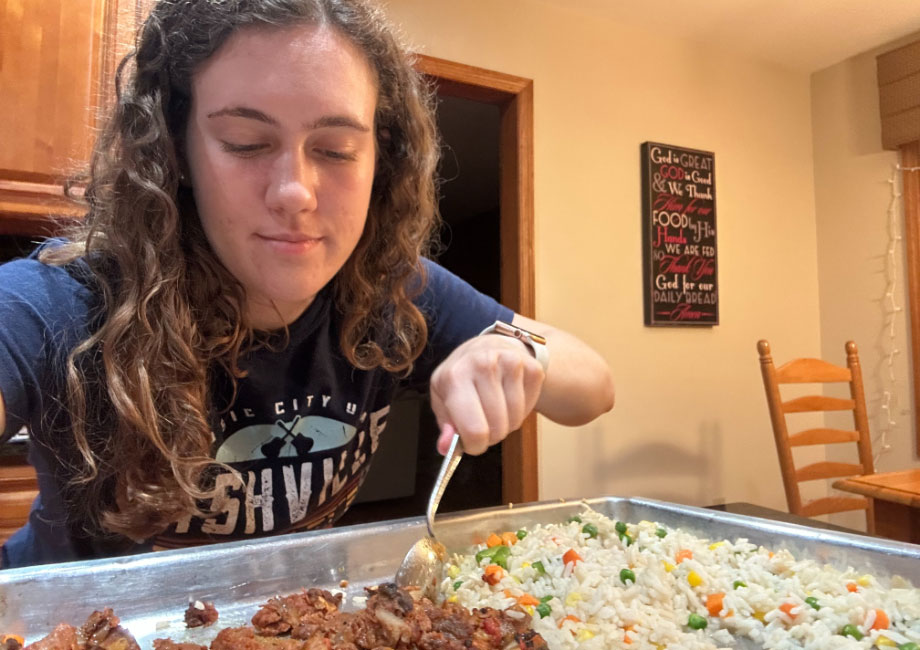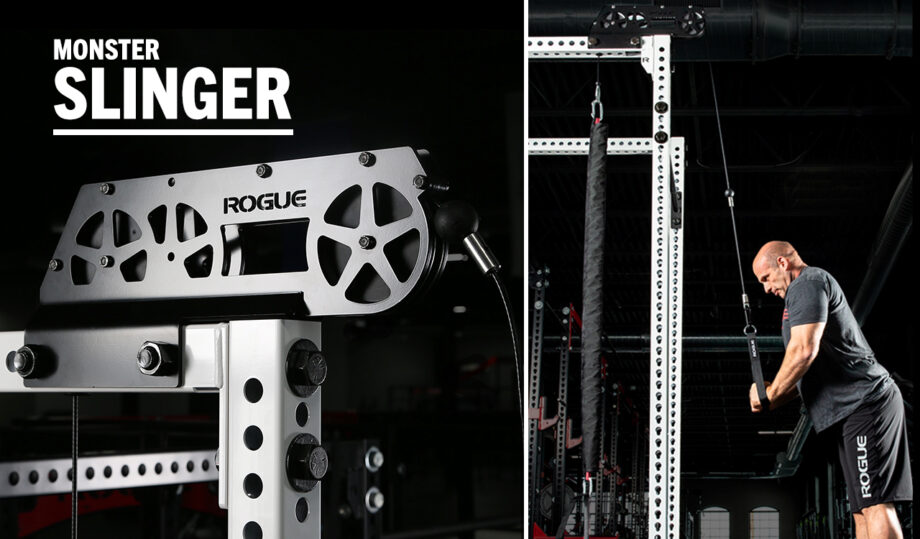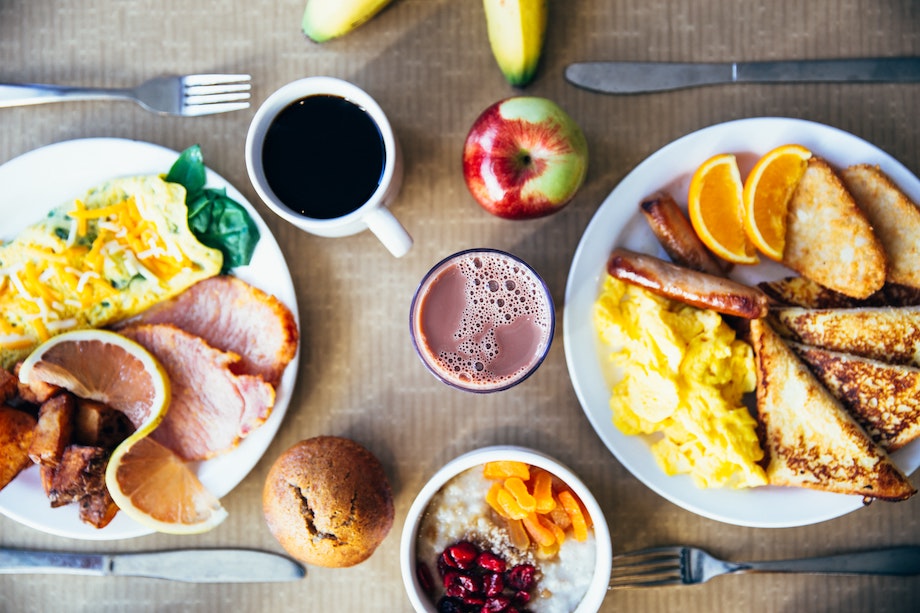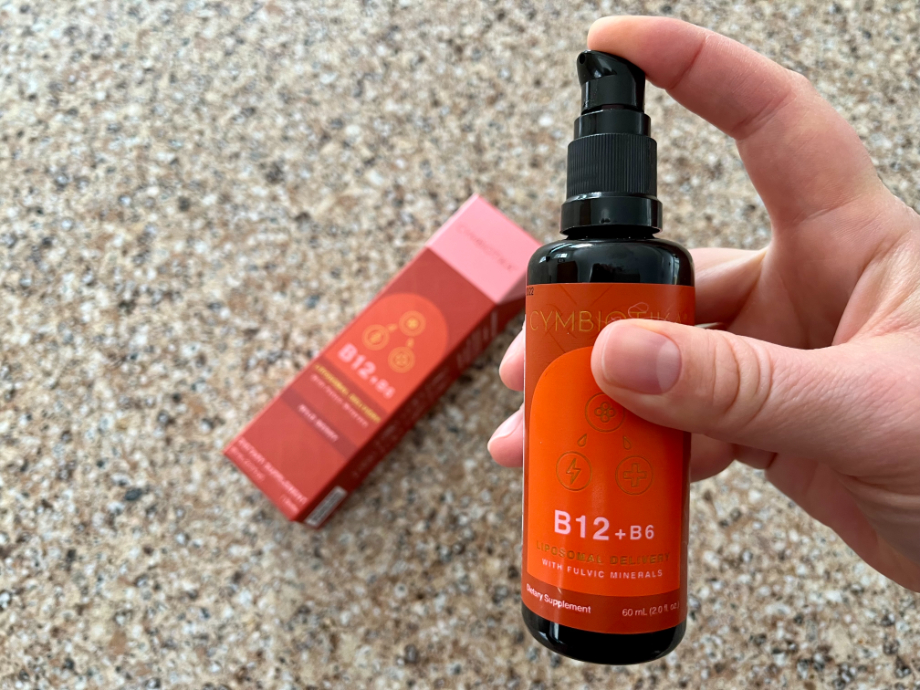Protein, protein, protein… Bodybuilders often promise it’s the secret to gains, nutrition experts want to tell the world about all of its pros, and the general population might not understand its prolific importance.
Now this begs the questions, “Why do I even need protein and where can I get it?” Besides the fact protein is key to build muscle, eating animal and plant-based proteins is necessary for sustaining life.
Ahead, we reveal 50+ of the best high-protein foods—and just why you should add them to your diet starting… Now! (Or, after you digest this science-based info created and reviewed by nutrition and health experts.)
Medical disclaimer: This article is intended for educational and informational purposes only. It is not intended as a substitute for medical advice. For health advice, contact a licensed healthcare provider.
Protein Refresher: What Is Protein and Why Is It Important?
Protein is one the three macronutrients—carbohydrates and fat being the other two. Macronutrients are the nutrients we need in larger (macro = large) amounts that provide us energy.
Protein is made up of building blocks called amino acids, which we’ll dive into later. Twenty primary amino acids build protein and the unique sequence dictates the protein’s role in the body. Essential roles and functions of protein include:
- Antibody proteins help support a strong immune system and protect the body from infections and diseases
- Enzyme proteins necessary to carry out thousands of critical chemical reactions in the cells
- Messenger proteins allow the structures of the body to communicate and respond accordingly, including hormones
- Structural proteins provide structure and support for cells and tissues that allow you to move, crush your workouts, and recover efficiently
- Transport and storage proteins carry and store small molecules throughout the body such as ferritin, a protein that stores iron in the cells
To sum it up, protein is found in muscle, hair, bone, and just about every body structure. Protein also is necessary to carry out virtually all biological and chemical reactions within the body, including life-saving roles like blood clotting and wound healing.
So, we guess you could say protein is pretty darn important! We’ll also touch on the more specific functions and benefits of protein below, so you’ll want to read this in full.
RELATED: Best protein powder for women
How Much Protein Should You Eat Each Day?
One of the most frequent questions we get as certified personal trainers and nutrition coaches is, “How much protein do I need?” There are different answers depending on whom you ask…but like answering any question, we turn to what the data tells us. Here’s what we know about daily protein intake related to general health and weight-based goals.
The Dietary Reference Intake (DRI) for protein is 0.80 grams of protein per kilogram (g/kg) of body weight or 0.36 grams of protein per pound (g/lb) of body weight. For someone who weighs 200 pounds, this amounts to about 73 grams of protein per day.
However, it’s important to note that DRIs are defined as the lowest daily intake value for a nutrient. While eating protein based on the DRI might be enough to counter deficiency and health risks, the amount you should eat also depends on factors like age, activity level, and physique goals.
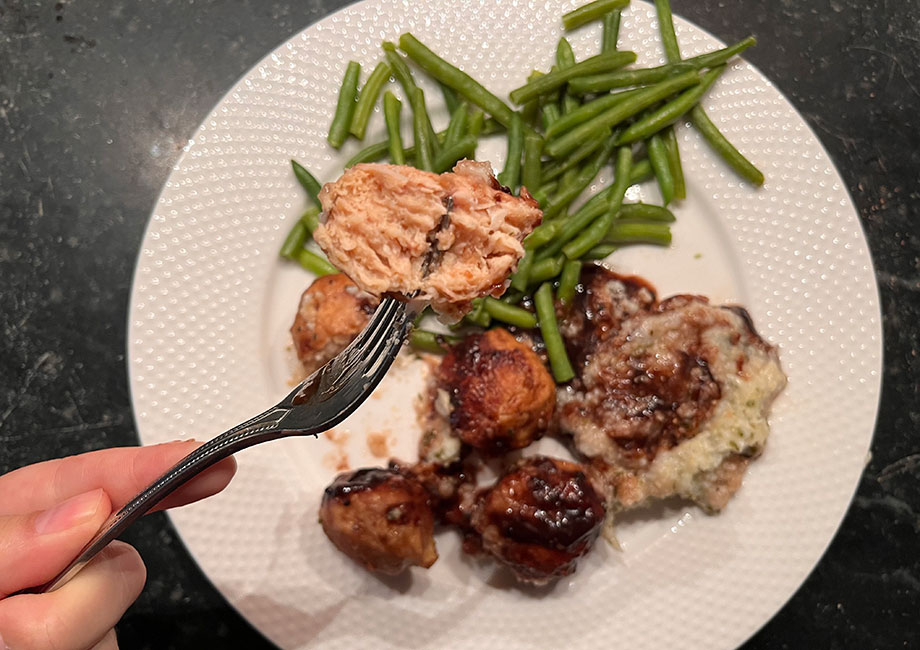
Evidence1 suggests that protein intakes in the range of at least 1.2 to 1.6 g/kg of high-quality protein is a more ideal target for achieving optimal health outcomes in adults. If your goal is fat loss, and you are in a caloric deficit, research2 suggests going as high as 2.0 g/kg may be helpful for protecting from lean muscle loss.
Internationally recognized professional organizations—like the Academy of Nutrition and Dietetics, American College of Sports Medicine, and International Society for Sports Nutrition—recommend physically active individuals consume double the current RDA as a general rule. Aiming for 1.2 to 2.0 g/kg each day shows to support athletic performance and recovery, according to joint recommendation data.3
If you’re concerned about your protein intake if think you might be at risk for protein deficiency, you should consult with your primary physician or a registered dietitian.
How Much Protein Should Meals Contain?
Especially in the fitness world, there’s an ongoing debate about how much protein can be absorbed from meals to maximize their training regimen. Amazingly, you can actually absorb ALL of the protein in a meal, although it might not be all used depending on how much protein you consumed and your own unique nutritional needs.
For some context on this protein squabble, earlier research claimed 20 grams of protein at a meal is sufficient to maximize the anabolic (muscle-building) response. Consuming more than 20 grams isn’t exactly harmful, but likely doesn’t provide any added benefits.
The more recent hype of intermittent fasting, specifically considering some bodybuilders can still build and sustain muscle mass while consuming only a high-protein meal or two a day, surfaced some skepticism. While there’s still no exact answer, research does suggest the amount of protein per meal is likely higher than it was once believed to be.
According to 2018 research4, one should consume 0.4 g/kg/meal across a minimum of four meals in order to reach a minimum of 1.6 g/kg/day. For someone weighing 200 pounds, this would equate to about 36 grams of protein at each meal.
Overall, most nutrition experts encourage spreading out protein intake throughout the day to support good digestion, control hunger, and withhold an anabolic state in the body. Focusing on not just the amount of protein consumed per day, but the quality of the sources tends to be what matters most.
As you can see, just like most nutritional recommendations, protein intake guidelines are nuanced and individualized. For expert guidance on the amount of protein you should aim for each day and at meals, consider consulting with a dietitian. They can clear confusion and help you determine your unique intake needs to suit your health goals, needs, and preferences.
Best Food Sources of Protein
We know protein is important, but how can you ensure you’re eating enough? Feast your eyes and appetites on these protein-rich foods—including animal and plant-based options—for muscle gains and to support your health for a lifetime.
Below you’ll also find a table highlighting various protein sources and the nutritional values they offer in common serving sizes. It can help you gain insight into how protein content can vary depending on the source, such as if it’s animal or plant-based, as well as guide you to meet your daily protein targets.
Animal Protein
When you think of protein, you likely think of animal meats and products—and for good reason! Animal proteins are nutritional powerhouses—offering micronutrients like vitamin B12, phosphorus, selenium, and zinc—but it’s important to note the saturated content they contain.
Saturated fats, which are found in animal-based foods, can increase cholesterol levels and the risk of heart disease when consumed in excess. The American Heart Association (AHA) recommends consuming no more than 6% of total calories from saturated fat, which amounts to 13 grams of saturated fat per day based on a 2,000-calorie diet.

You can limit saturated fat content, especially in red meats, by selecting “loins” and at least 93% lean ground meats. Choosing skinless, white meat poultry can also reduce the saturated and overall fat content.
All-in-all, consume leaner animal proteins in their most natural form. Great animal protein options include:
- Beef, including round cuts and sirloin
- Bison
- Chicken
- Duck
- Eggs, including whole eggs and egg whites
- Lamb
- Pork tenderloin
- Turkey
- Venison
*Also reduce the intake of processed meats like cured deli meats, hot dogs, and bacon. The World Health Organization classifies them as carcinogenic—or having the potential to cause cancer.
Fish and Shellfish
Fish and shellfish are a great catch for your protein net! Fatty rich, especially, are rich in omega-3 fatty acids—a type of healthy fat proven to support heart, brain, and really just overall health. Fish is also a good source of calcium, vitamin D, iodine, and other beneficial nutrients.
Fin-tastic protein sources include:
- Anchovies
- Cod
- Halibut
- Herring
- Flounder
- Mackerel
- Pollock
- Salmon
- Sardines
- Swordfish
- Tilapia
- Trout
- Tuna

Common shellfish include:
- Clams
- Crab
- Lobster
- Mussels
- Oysters
- Prawns
- Scallops
- Shrimp
Dairy Products
Dairy products are a great source of protein, as well as calcium, phosphorus, and other nutrients. Like animal proteins, it’s wise to limit whole-fat dairy products that are rich in saturated fat and go for skim and low-fat options.
Protein-rich dairy products include:
- Cheese, including cubed, shredded, and string cheeses
- Cottage cheese
- Cow’s milk
- Greek yogurt, just watch out for added sugars
- Whey protein powders
- Casein protein powders
Beans and Legumes
Beans, a type of legume, provide plant-based protein, which is essential for those who follow a vegetarian-type diet or simply trying to limit animal products. These plant-based proteins are also rich in nutrients like fiber and phytochemicals, which are chemicals produced by plants and often elicit antioxidant properties.
The combo of protein and fiber can further induce satiety and keep hunger levels at bay. Fiber on its own supports good digestion, heart health, and healthy body weight, just to name a few widely-known benefits.
Protein and fiber-packed bean varieties to enjoy as a side, in soups and chilis, and so much more include:
- Adzuki beans
- Black beans
- Black-eyed peas
- Cannellini beans
- Chili beans
- Fava beans
- Garbanzo beans, also known as chickpeas
- Great northern beans
- Kidney beans
- Lima beans
- Mung beans
- Navy beans
- Pinto beans
- Soybeans (more on this ahead)

If you’ve “bean” there and done that with the above legumes, try out these other options:
- Green peas
- Lentils, including all color varieties such as green, red, and black
- Peanuts (technically a legume, not a nut!) and peanut butter
- Pigeon beans
- Split peas, including green split peas and pigeon split peas
Nuts and Seeds
While primarily healthy fat sources, nuts and seeds provide high-quality vegetable protein, fiber, and other beneficial nutrients. The health benefits of nut consumption5 mostly relate to cardiovascular and metabolic health, as well as beneficial effects on hypertension, cancer, and inflammation.
One great advantage of nuts, seeds, and nut and seed butters is how readily available they are to enjoy—they can be consumed as-is and topped onto yogurt, oatmeal, salads, and so much more. Shake up your nut and seed rotation with one (or all) of these options:

- Almonds
- Brazil nuts
- Cashews
- Chia seeds
- Hazelnuts
- Flaxseeds
- Nut and seed butters, such as almond butter and cashew butter
- Pecans
- Pistachios
- Pumpkin seeds, also known as pepita
- Sunflower seeds
- Walnuts

Plant-Based Protein
Plant-based protein encompasses any plant that provides protein, including beans, legumes, nuts, and seeds. While technically a legume, soy-based proteins tend to be in their own subset due to their wide acceptance and versatility—especially amongst vegetarian and vegan diets.
Soybeans and soy products are high-quality protein sources that provide fiber, potassium, B vitamins, calcium, and other vitamins and minerals. Popular soy-based proteins include:
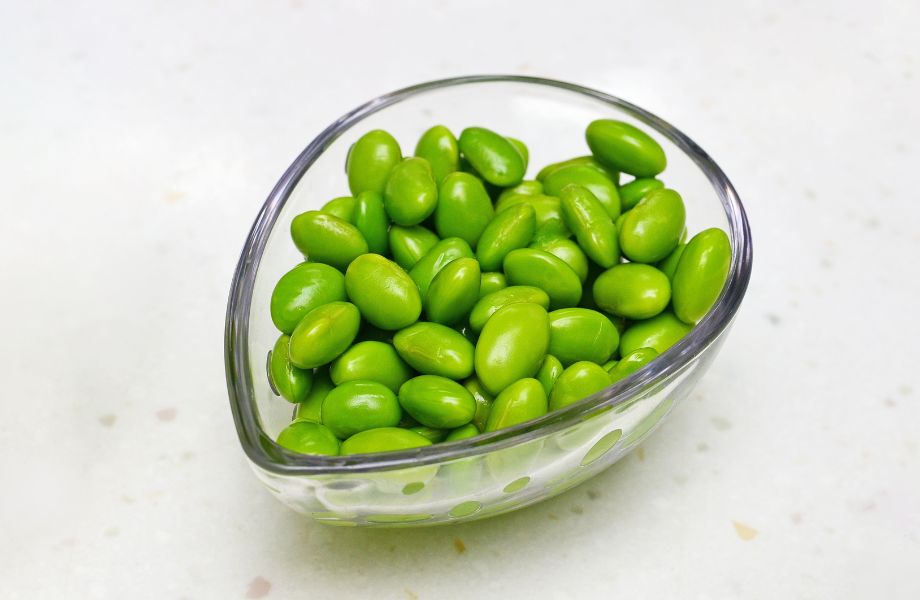
- Edamame
- Soy milk
- Soy nuts
- Tofu
- Tempeh
- Textured vegetable protein (TVP)
- Vegan protein powders
Grains and Other Related Options
Did you know grains also offer protein? While grains do not provide as much protein as animal meats, dairy products, and other aforementioned options, they can contribute to your daily protein intake.
Where whole grains truly shine are the other nutrients they offer, including fiber, phosphorus, magnesium, and B vitamins like folate and thiamin. Boost the nutritional value of your meal with these options:

- Barley
- Brown rice
- Couscous (so nice, they named it twice!)
- Ezekiel bread
- Farro
- Oats
- Quinoa (often used as a grain but technically a seed!)
- Spelt
- Multigrain bread
- Whole wheat pasta
- Wild rice
High-Protein Food Values Table
Now you might be thinking, “Those high-protein foods sound great and all, but how do I know if I’m meeting my targets?” Don’t worry, we considered this question and compiled nutritional values of common protein options for you to use as a general reference.
The values are based on typical portion sizes. They also indicate whether or not they’ve been cooked, as cooking proteins—animal meats, especially—can alter their nutritional value.
| Calories | Protein (g) | Fat (g) | Carbs (g) | Fiber (g) | |
| Animal Proteins | |||||
| 3 ounces beef top sirloin (no-fat, broiled) | 155 | 26 | 5 | 0 | 0 |
| 3 ounces chicken breast (skinless, boneless, roasted) | 140 | 26 | 3 | 0 | 0 |
| 4 ounces ground turkey (lean, raw) | 170 | 21 | 8 | 0 | 0 |
| 1 large egg | 60 | 6 | 4 | 0 | 0 |
| 3 ounces pork tenderloin (roasted) | 120 | 22 | 3 | 0 | 0 |
| Fish and Shellfish | |||||
| 4 ounces Atlantic cod (raw) | 95 | 20 | 1 | 0 | 0 |
| 4 ounces Atlantic wild salmon (raw) | 160 | 22 | 7 | 0 | 0 |
| 4 ounces tilapia (raw) | 110 | 23 | 2 | 0 | 0 |
| 4 ounces Eastern wild oysters (raw) | 60 | 6 | 2 | 3 | 0 |
| 4 ounces shrimp (raw) | 80 | 15 | 1 | 1 | 0 |
| Dairy Products | |||||
| ½ cup cottage cheese (low-fat, 1%) | 80 | 14 | 1 | 3 | 3 |
| 8 ounces (1 cup) cow’s milk (low-fat, 1%) | 100 | 8 | 2 | 12 | 0 |
| ½ cup Greek yogurt (plain, low-fat) | 80 | 11 | 2 | 4 | 11 |
| 28g whey protein powder | 110` | 20 | 1 | 5 | 0 |
| Beans and Legumes | |||||
| ½ cup black beans (canned) | 100 | 6 | 1 | 17 | 6 |
| ½ cup garbanzo beans (canned) | 110 | 7 | 3 | 15 | 2 |
| ½ cup green peas (canned) | 60 | 4 | 3 | 10 | 4 |
| ½ cup lentils | 115 | 9 | 0 | 20 | 8 |
| ½ cup pinto beans (canned) | 100 | 6 | 1 | 18 | 6 |
| 1 ounce peanuts (boiled) | 90 | 4 | 6 | 6 | 2 |
| Nuts and Seeds | |||||
| 1 ounce almonds (sliced) | 165 | 6 | 14 | 6 | 4 |
| 1 ounces cashews (halves) | 160 | 5 | 13 | 9 | 2 |
| 1 ounce pumpkin seeds (whole, roasted) | 160 | 8 | 14 | 4 | 2 |
| 1 ounce sunflower seeds (dry roasted) | 165 | 5 | 14 | 7 | 3 |
| Plant-Based Protein | |||||
| 1 cup edamame (cookied) | 190 | 17 | 8 | 15 | 8 |
| 3 ounces tempeh | 165 | 17 | 10 | 6 | 8 |
| 3 ounces firm tofu | 75 | 8 | 3 | 2 | 1 |
| Grains and Related Products | |||||
| ¼ cup brown rice (uncooked) | 170 | 4 | 1 | 36 | 2 |
| 1 slice ezekiel bread | 80 | 4 | 1 | 15 | 3 |
| ½ cup oats (uncooked) | 150 | 5 | 3 | 27 | 4 |
| 1 cup quinoa (cooked) | 220 | 8 | 4 | 39 | 5 |
| 1 cup whole wheat pasta (cooked) | 210 | 8 | 2 | 42 | 5 |
Why It’s Important to Eat Enough Protein Every Day
First and foremost, protein is absolutely necessary for life. That in and of itself is enough to justify the importance of eating protein every day but, as nutrition and health fanatics, we can’t NOT get into the major health benefits of protein!
Supports and Builds Muscle Mass
Of course, we can’t mention protein without getting into the nitty-gritty of building strength and muscle! And if you want to build and sustain muscle mass, getting enough protein is absolutely necessary.
A study6 details that an increased protein intake yields greater strength and muscle gains, specifically when coupled with resistance training. Sufficient protein also helps preserve muscle during a negative energy balance, or a caloric deficit, and limits age-related muscle loss.
Truly, muscle is so much more than being aesthetic. It’s also critical to keep the body functional while aging, allowing us to experience life and live it to the fullest for years to come.
Boosts Metabolism and Fat Burn
Because protein promotes muscle-building and muscle is more metabolically active, a higher-protein diet can boost your daily metabolic expenditure. A fast metabolism can help you lose body fat without major calorie restriction and increases in cardio.
Evidence7 supports that higher-protein diets may increase weight and fat loss compared to lower-protein diets. This might be because high-protein intake can increase thermogenesis, or the energy used and heat produced to digest a meal. Eating regular protein may also increase feelings of fullness and diminish cravings, which naturally helps control calorie intake.
Protects Against Bone Loss
Protein might not first come to mind when thinking about bone health—looking at you, calcium. In fact, once upon a time, it was thought that high-protein intakes can be detrimental to bone health.
Fast forward to current 2019 research3, higher protein diets may actually protect against osteoporosis. Other data8 supports the positive benefits of protein on bone health with adequate calcium intake.
Bolsters Immunity
With certain proteins acting as antibodies, it only makes sense the macronutrient can bolster the immune system. Research9 tells us deficiencies in dietary protein and/or amino acids can impair immune function and increase the risk of infectious disease.
Growing evidence also shows supplementing with certain amino acids—specifically arginine, glutamine, and cysteine—enhances immunity in people with malnutrition and infectious diseases. These nutrients may improve health and prevent infectious diseases as well.
Promotes Heart Health
Protein is essential for supporting cardiac muscle, which is one of the three muscle types. Cardiac muscle is found in the walls of the heart and keeping it strong is vital for life-sustaining functions, including transporting blood throughout the body.
A study published in the Journal of the American Medical Association10 further suggests protein-focused diets may lower blood pressure, improve lipid levels, and reduce estimated cardiovascular risk. This doesn’t mean skimping on your cardio, but it does show to be an effective dietary approach to promote heart health.
Tips to Incorporate More Protein Into Your Diet
We’ve touched on the sources and importance of protein, so how can you incorporate more protein into your daily diet? Because we understand checking off all those healthy habit boxes can be challenging, especially when triumphing through an endless to-do list, we curated actional tips anyone can turn to no matter their lifestyle!
Start the Day with Protein
Have you heard of the concept of “eating the frog?” To frog jog your memory, it’s the idea of accomplishing that one daunting task first thing in the morning, which then helps to spur productivity and motivation for the rest of the day.
In relation to your daily diet, “eat the protein” to kickstart the day—frogs not required but you do you! Instead of resorting to a sugary bowl of cereal, give these protein-filled breakfast ideas a try:
- Egg omelet stuffed with veggies, part-skim shredded cheese, and a lower-fat breakfast meat—like Canadian bacon and turkey sausage
- Breakfast burrito with similar ingredients as an egg omelet
- Overnight oats mixed with Greek yogurt and/or the best-tasting protein powder in your pantry
- Greek yogurt parfait with preferred nuts and fresh berries
- Smoothie blended with fruit, leafy greens, and a protein source or two like Greek yogurt, protein powder, and cottage cheese
RELATED: Best protein powder for men
Prep Protein In Advance
Just like packing for fitness success to tackle the best hotel room workouts, prep some proteins or meals in advance. This limits any friction or temptation you might experience during those busy days when the temptation of pizza delivery overrules cooking a more wholesome meal.
While often conquered on a Sunday, you can elect any day to prepare a big batch or two of various protein sources like ground turkey, baked chicken breasts, etc. If grilling fillets on a nice day, consider grilling extra or other protein-rich foods you can eat throughout the week.
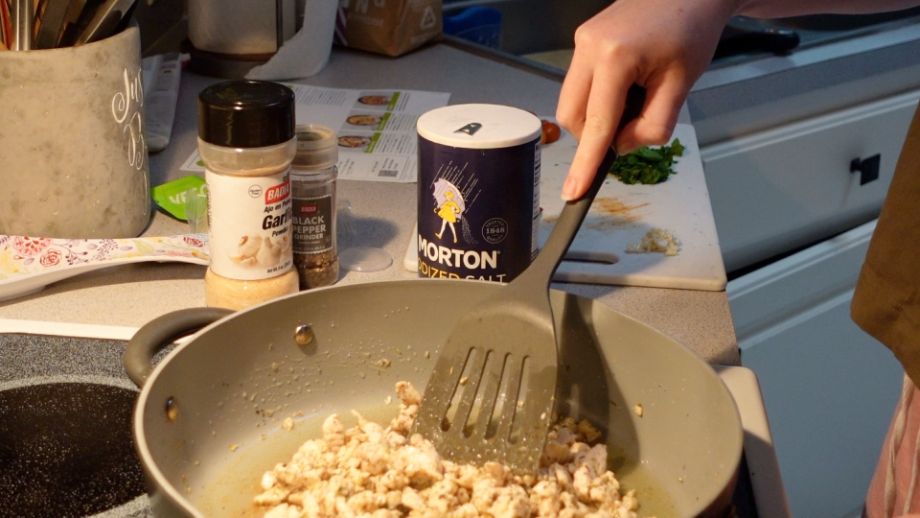
Once prepped, you can either pre-assemble into a selected dish or store it as-is and rotate the meals throughout the week. So if you cooked a package of lean ground beef, season it with taco seasoning for #TacoTuesday or combine it into a stir-fry with rice, veggies, and other favorite mix-ins—this prep method is especially useful for those who regularly enjoy meal and flavor variations.
Order Extra
If you’re ordering or dining out, order extra protein with your meal(s). For instance, order a double serving of chicken for a build-your-own bow or two lean beef patties for a burger. Even if you don’t plan on eating the entire portion, you at least have extra prepared and ready to enjoy!
You can also order additional protein-rich entrees to enjoy throughout the week, especially if you don’t necessarily enjoy cooking or lack the time for it. Taking advantage of meal delivery and prep services can keep you stocked with ready-prepared, protein-rich meals as well.
Include Protein with Snacks
Let’s face it: potato chips, crackers, and even some proclaimed health bars lack nutritional value. Of course, there’s nothing inherently wrong with enjoying potato chips—we just can’t let you miss out on a great protein opportunity!
If you’re a snacker, beat that snack attack with a protein option:
- Cottage cheese
- Greek yogurt
- Hard-boiled eggs
- Jerky
- String cheese
Okay, now you might be wondering if you can still have those potato chips… And you can! By pairing a serving with a protein food, you can have the best of both worlds while diminishing hunger and cravings until your next meal. Or, you can take a look at our recommendations for the best protein chips.
Set Predetermined Protein Days
We’ve all heard about #TacoTuesday but what about #FishFriday and #SoybeanSaturday. Okay, these might not be popular but designating certain days for a predetermined protein helps take out any guesswork.
Lean on Protein Supplements
While protein supplements should, well, supplement a balanced diet, they can be convenient and viable options to boost daily protein intake. Also since protein powders come in animal and plant-based varieties, as well as different flavors, there tends to be a selection for just about any dietary preference.
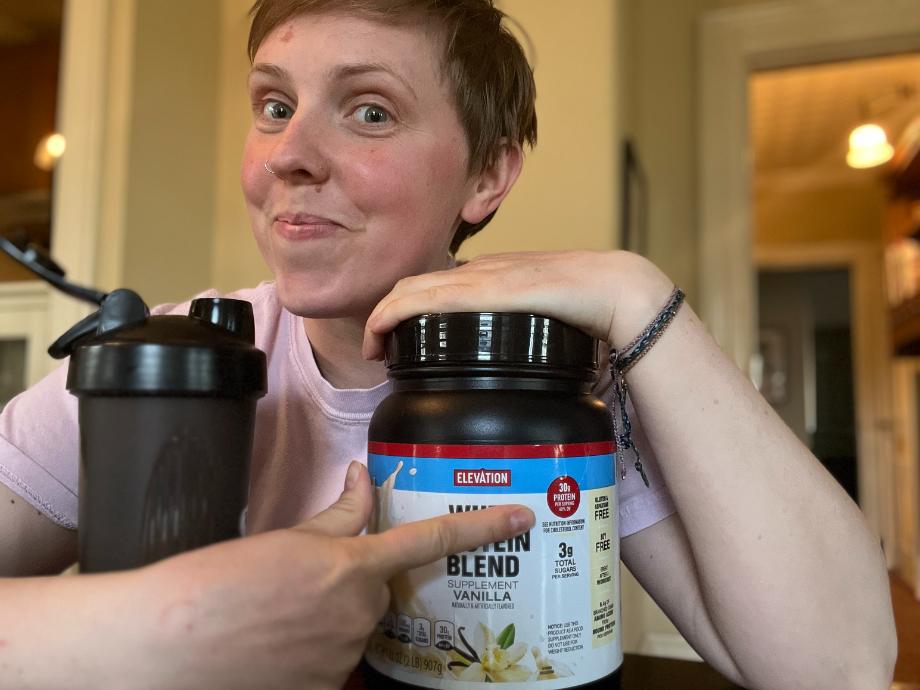
When in a time crunch and need quick protein, simply mix with water or milk and sip away. If you have a few more minutes to spare, blend protein powder in a bowl of oatmeal (for protein oats AKA “proats”), smoothie, or Greek yogurt for an added protein and nutritional boost.
Speaking of protein powders…
RELATED: Best Protein Powder
Explore Budget-Friendly Protein Options
Whole-foods rich in protein can get pretty expensive, so if you need to cover a lot of ground on a limited budget, here are a few examples of cost-friendly protein sources you can buy in bulk or freeze:
- Lentils
- Oats
- Peanuts
- Canned tuna
- Black beans
- Sardines
- Ground turkey and chicken
- Chicken breast
Whole-Food Protein Sources vs Protein Shakes and Powders
Protein powder is a powdered, supplemental form of protein and mostly comes from milk (either casein, whey, or a combination of both) or plant sources (such as soy, pea, rice, and hemp). It may also contain artificial sweeteners, added sugars, thickeners, and other ingredients to enhance the flavor and shelf-life.
Using protein powders and the best protein shakes can help people meet their protein needs while improving body composition, according to a 2014 meta-analysis published in the Journal of the American College of Nutrition.11 Unlike some other protein sources, especially animal and dairy proteins, protein powders are shelf-stable and convenient for people on the go. Using protein powder is also
How to Best Use Protein Powders
While protein powders can be highly beneficial, it’s still important to include whole-food protein sources in your daily diet. This is because protein powders often lack nutrients whole foods provide like fiber, omega-3s, and more.
That said, most nutrition experts encourage a food-first approach and fill in gaps with supplements as needed. To support both your body composition and health goals, balance your diet with whole foods first and use a high-quality protein powder as needed.
RELATED: Best organic protein powders
You can also use protein powder to boost the protein content of your meals. As mentioned above, blend protein powder into oatmeal, smoothies, and yogurt for a nutritional and flavor boost.
Amino Acids vs Protein
To recap, amino acids12 are the building blocks of protein. While there are hundreds of amino acids found in nature, only about 20 amino acids are needed to make all the proteins found in the human body and most other forms of life!
Of the 20 amino acids, 11 of them are non-essential amino acids. Non-essential means our bodies can produce them if they are not consumed from the foods we eat. The non-essential amino acids include:
- Alanine
- Arginine
- Asparagine
- Aspartic acid
- Cysteine
- Glutamic acid
- Glutamine
- Glycine
- Proline
- Serine
- Tyrosine
The remaining nine are essential amino acids, meaning the body cannot make essential amino acids and you need to get them from protein-rich sources. Essential amino acids include:
- Histidine
- Isoleucine
- Leucine
- Lysine
- Methionine
- Phenylalanine
- Threonine
- Tryptophan
- Valine
Foods that contain all nine essential amino acids are referred to as complete proteins. Meat, seafood, and most animal-based proteins contain all essential amino acids. Plant-based proteins, except a select few others like soy, are considered to be incomplete proteins and lack all nine essential amino acids.
Overall, all the functions of protein would not be possible without amino acids. You can ensure you’re getting sufficient amino acid and protein intake by regularly varying your protein sources.
High-Protein Foods: Final Thoughts
Protein is an essential macronutrient mostly found in muscle, although it provides structure to virtually all body tissues, organs, and cells. Beyond supporting the body’s structures, some proteins act as antibodies, enzymes, and transporters to carry out thousands of life-sustaining processes.
- Eating high-protein foods helps build muscle, increase metabolism and fat burn, enhance recovery, and promote overall good health for the long haul.
- Protein is mostly sourced from animal proteins, like meat and poultry, but can also be found in plant-based foods such as legumes and nuts.
- Protein supplements are convenient and viable options to increase daily protein, although they should not completely substitute a balanced diet containing whole foods.
RELATED: Best protein bars
- Varying your protein sources helps ensure you are consuming all essential amino acids, which must be obtained from your diet. While non-essential amino acids are important, the body can produce them on its own.
Hopefully, after digesting this, you’ve gained at least one new knowledge nugget about protein’s prolific importance—and are ready to add these high-protein foods to your diet actually starting… NOW!
High-Protein Foods: FAQs
What foods are the highest in protein?
The highest protein foods include animal meats, dairy products, fish, and legumes. Most nuts, seeds, and whole grains contain some protein, just in smaller quantities, as well as veggies in even smaller amounts.
Can you get enough protein each day from plant protein only?
With careful thought and strategy, you can absolutely get enough protein per day from plant proteins only. Rotating and varying your proteins—like tempeh, quinoa, beans, and lentils—can help ensure you are consuming all essential amino acids.
Do veggies have protein?
Veggies do have protein and the amount they offer depends on the type. Legumes, which are technically a type of vegetable, tend to provide the most protein while non-starchy varieties—like artichokes, brussels sprouts, and leafy greens—offer protein in lower quantities.
Is a high-protein diet healthy?
For the general healthy population, research13 suggests long-term consumption of 2.0 grams of protein per kilogram of bodyweight. However, chronic intake of more than 2.0 g/kg may cause issues related to digestive, renal, and vascular health.
It’s also important that protein intake does not overrule or displace other vital food sources like fruits, veggies, and other nutrient-dense foods. If interested in a high-protein diet and/or managing a health condition, it’s wise to consult with a healthcare professional for guidance.
What is a complete protein?
A complete protein is a protein source that provides all nine essential amino acids. Animal proteins, along with some plant-based proteins like soy, are complete proteins.
Are protein shakes healthy?
Protein shakes can be a healthy protein option, especially when a balanced meal is not readily accessible. However, it is important to watch out for added sugars and other unwanted ingredients they may contain.
References:
- Phillips SM, Chevalier S, Leidy HJ. Protein “requirements” beyond the RDA: implications for optimizing health. Appl Physiol Nutr Metab. 2016 May;41(5):565-72. doi: 10.1139/apnm-2015-0550. Epub 2016 Feb 9. Erratum in: Appl Physiol Nutr Metab. 2022 May;47(5):615. PMID: 26960445.
- Phillips SM, Van Loon LJ. Dietary protein for athletes: from requirements to optimum adaptation. J Sports Sci. 2011;29 Suppl 1:S29-38. doi: 10.1080/02640414.2011.619204. PMID: 22150425.
- Carbone JW, Pasiakos SM. Dietary Protein and Muscle Mass: Translating Science to Application and Health Benefit. Nutrients. 2019;11(5):1136. Published 2019 May 22. doi:10.3390/nu11051136
- Schoenfeld BJ, Aragon AA. How much protein can the body use in a single meal for muscle-building? Implications for daily protein distribution. J Int Soc Sports Nutr. 2018 Feb 27;15:10. doi: 10.1186/s12970-018-0215-1. PMID: 29497353; PMCID: PMC5828430.
- Ros E. Health benefits of nut consumption. Nutrients. 2010 Jul;2(7):652-682. doi: 10.3390/nu2070652. Epub 2010 Jun 24. PMID: 22254047; PMCID: PMC3257681.
- Carbone JW, Pasiakos SM. Dietary Protein and Muscle Mass: Translating Science to Application and Health Benefit. Nutrients. 2019;11(5):1136. Published 2019 May 22. doi:10.3390/nu11051136
- Halton TL, Hu FB. The effects of high protein diets on thermogenesis, satiety and weight loss: a critical review. J Am Coll Nutr. 2004 Oct;23(5):373-85. doi: 10.1080/07315724.2004.10719381. PMID: 15466943.
- Mangano KM, Sahni S, Kerstetter JE. Dietary protein is beneficial to bone health under conditions of adequate calcium intake: an update on clinical research. Curr Opin Clin Nutr Metab Care. 2014 Jan;17(1):69-74. doi: 10.1097/MCO.0000000000000013. PMID: 24316688; PMCID: PMC4180248.
- Li P, Yin YL, Li D, Kim SW, Wu G. Amino acids and immune function. Br J Nutr. 2007 Aug;98(2):237-52. doi: 10.1017/S000711450769936X. Epub 2007 Apr 3. PMID: 17403271.
- Appel LJ, Sacks FM, Carey VJ, et al. OmniHeart Collaborative Research Group. Effects of protein, monounsaturated fat, and carbohydrate intake on blood pressure and serum lipids: results of the OmniHeart randomized trial. JAMA. 2005 Nov 16;294(19):2455-64. doi: 10.1001/jama.294.19.2455. PMID: 16287956.
- Miller PE, Alexander DD, Perez V. Effects of whey protein and resistance exercise on body composition: a meta-analysis of randomized controlled trials. J Am Coll Nutr. 2014;33(2):163-75. doi: 10.1080/07315724.2013.875365. PMID: 24724774.
- Lopez MJ, Mohiuddin SS. Biochemistry, Essential Amino Acids. [Updated 2022 Mar 18]. In: StatPearls [Internet]. Treasure Island (FL): StatPearls Publishing; 2022 Jan-. Available from: https://www.ncbi.nlm.nih.gov/books/NBK557845/
- Wu G. Dietary protein intake and human health. Food Funct. 2016 Mar;7(3):1251-65. doi: 10.1039/c5fo01530h. PMID: 26797090.


